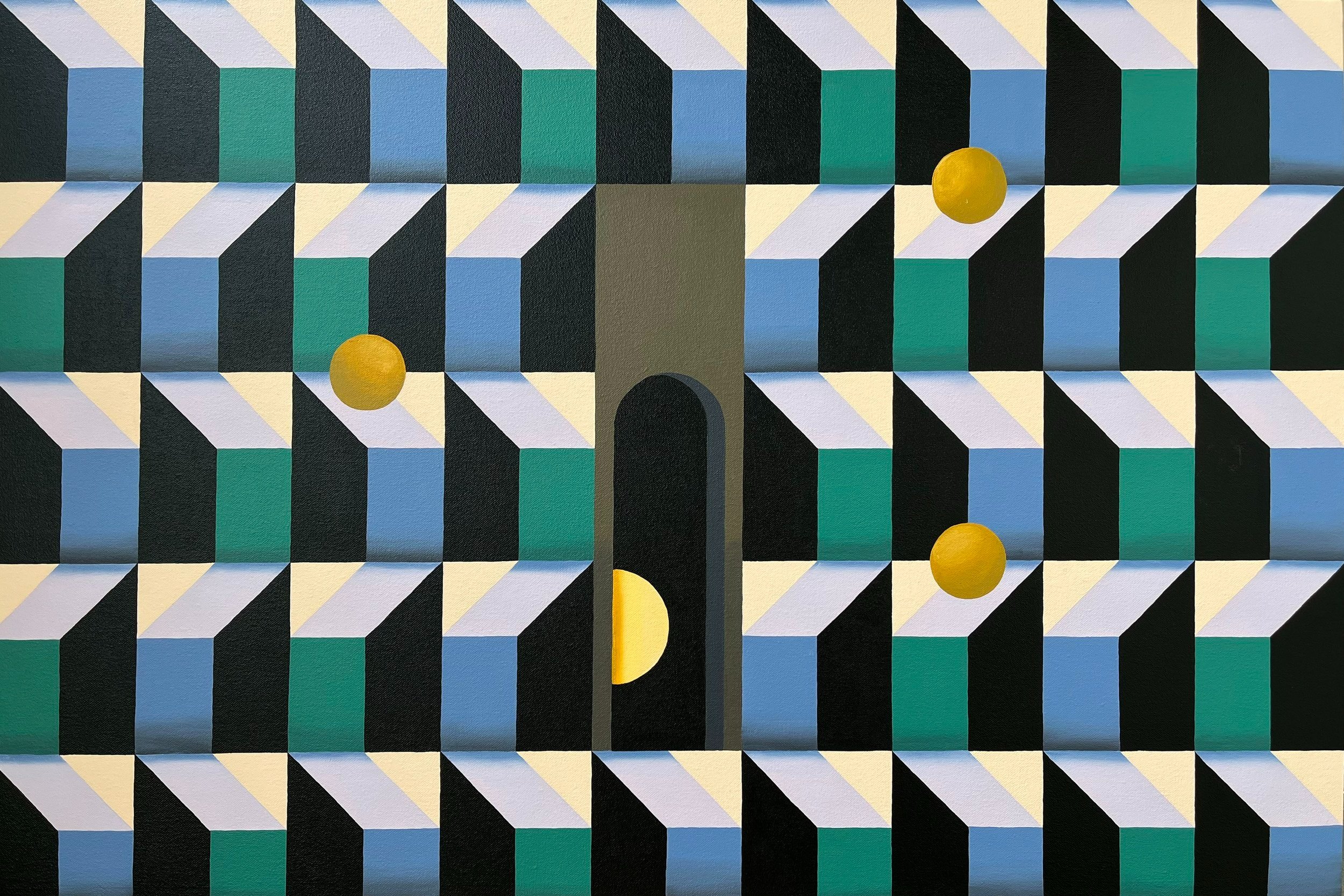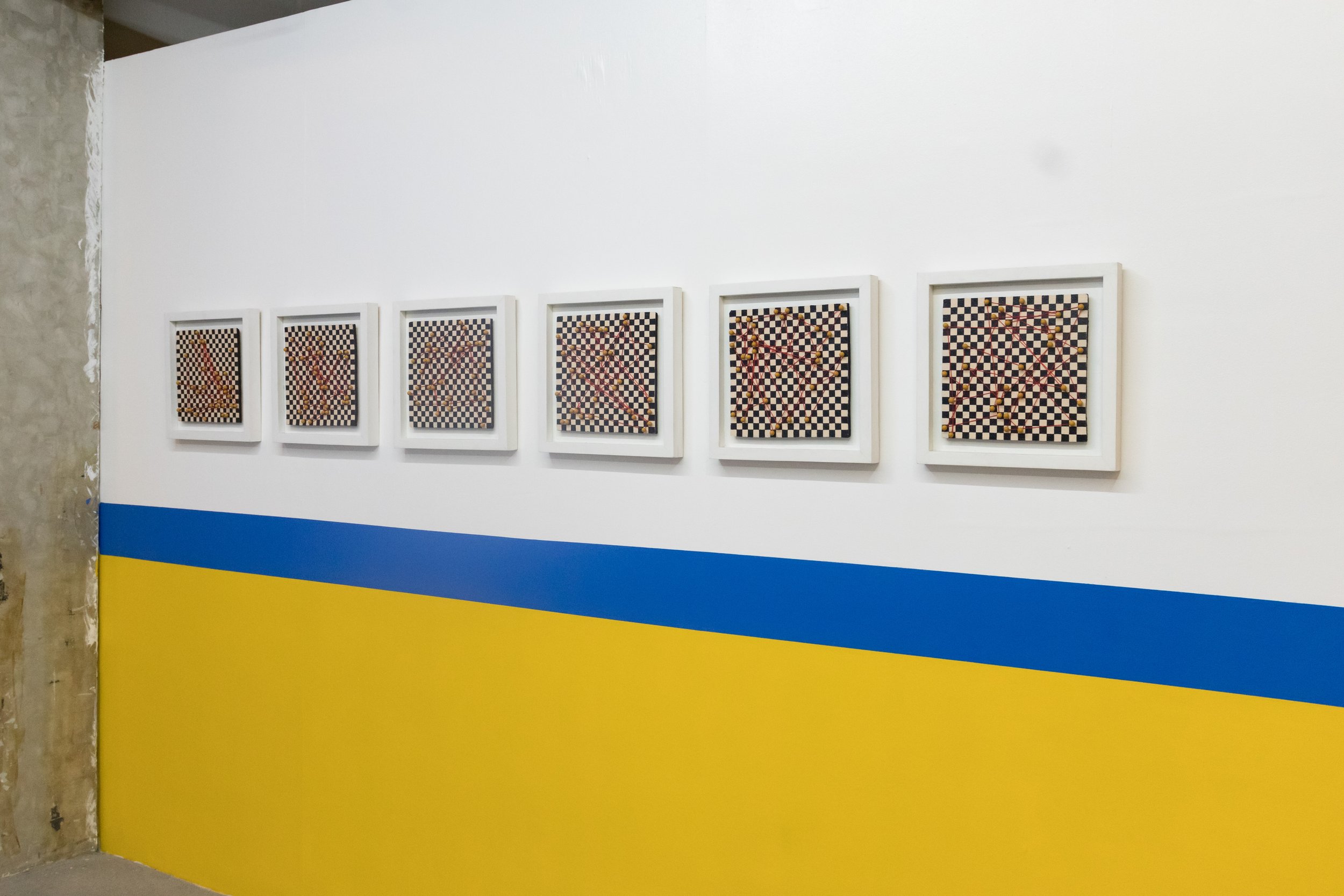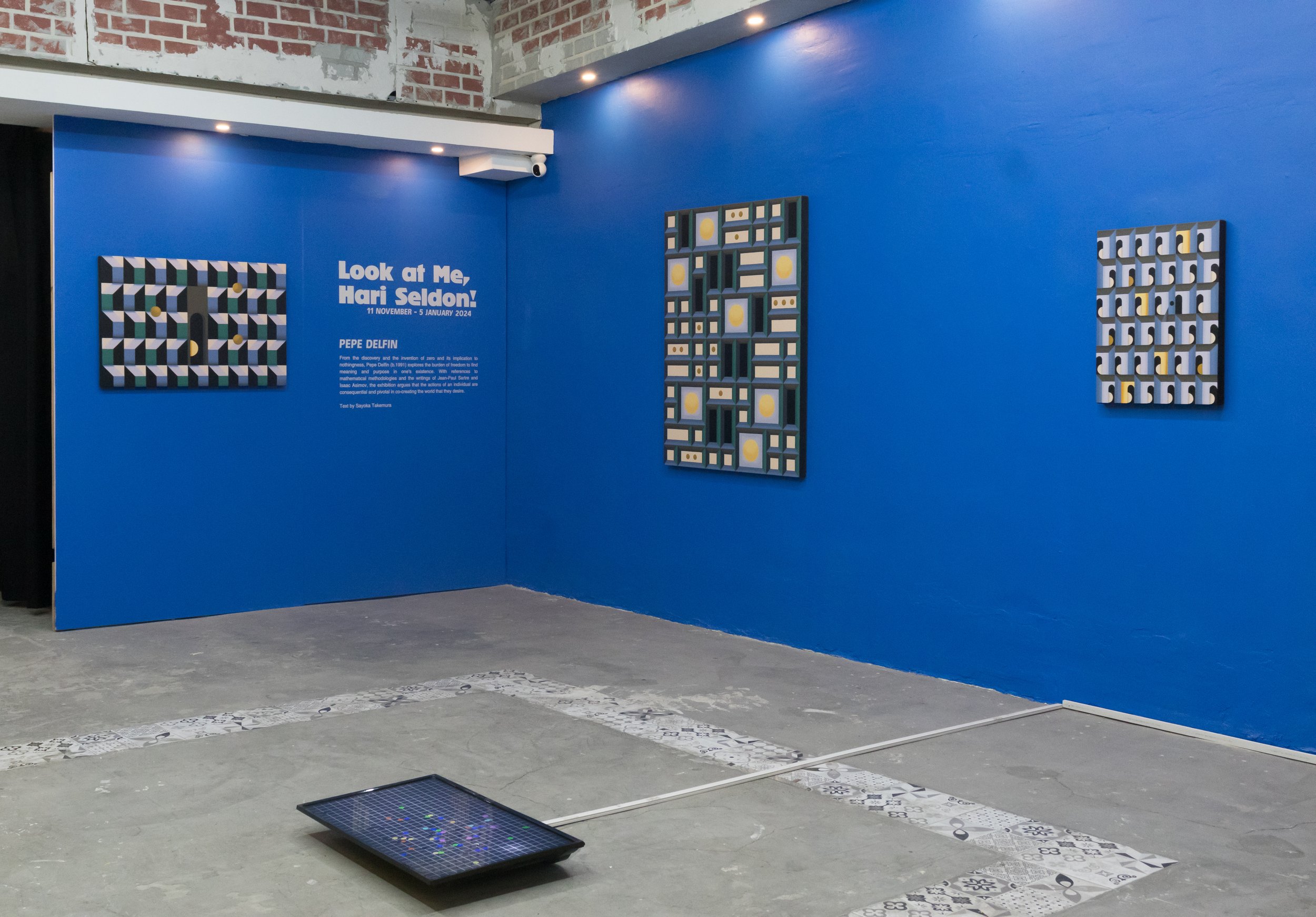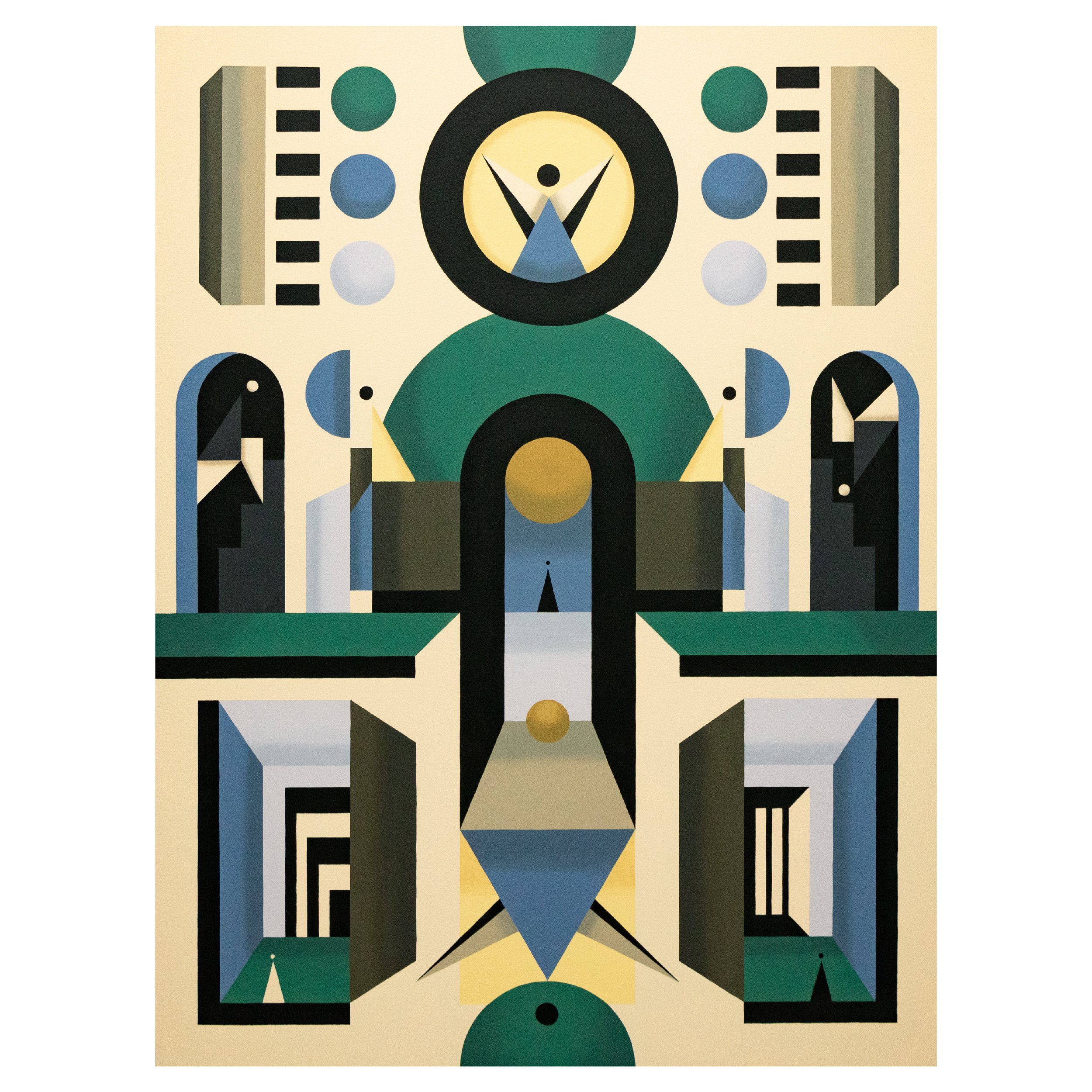
11 November 2023 - 5 January 2024
Look at Me, Hari Seldon!
Pepe Delfin

With all these calculations and considerations, is it still possible to predict the future in probabilistic terms? Suppose one choice was selected from the other; how different would the outcome be? Would it be better than another?
Between the 1943 writing of "Being and Nothingness" by Jean-Paul Sartre and the psychohistorian approach of Hari Seldon from the "Foundation" series by Isaac Asimov, Pepe Delfin (b. 1991) explores the burden of freedom to find meaning and purpose in one's existence through assembled calculated compositions. Across the exhibition, in painting and digital mediums, every line, shape, and element is considered using geometry, mathematical concepts, and statistical illusions. Delfin connects infinity with nothingness and zero with freedom in an attempt to visually elucidate parameters—the limitations and lack thereof—of living authentically and the agony that comes with the yearning for the wholeness of being.
With freedom comes a seemingly limitless stream of choices and, as Sartre adds, the total burden of responsibility. The French philosopher alludes to this “anguish” as what quietly exists alongside this flurry of possibilities— all towards creating the world one desires. The exacting use of geometry and color in Delfin's paintings implies continuous movement beyond the composition as they mirror life as everyone experiences it. Sharp edges and corners of shapes are repeatedly present across the surface, suggesting pauses and intermissions that the individual consciously decides.
From the outside, the planned and calculated presentation appears to be nothing more than pleasing, yet it speaks of the ceaseless and exhausting burden of being the one in command. Eventually, with more wisdom from failures and successes, one begins to discern and recalibrate directions and seek a higher purpose with clarity, initially blurred by the nothingness of freedom.
However, with all these calculations and considerations, is it still possible to predict the future in probabilistic terms? Suppose one choice was selected from the other; how different would the outcome be? Would it be better than another? Delfin plots these prospects on a grid to visualize. Unlike Seldon, she does not anticipate an answer but instead sees the multitude of other odds and their significance or irrelevance in totality.
In most cases, the speed at which reality operates does not allow one to always plan thoroughly in minute details, and one learns to adapt and meet fitting solutions. Ultimately, even with the absolute truth of mathematics, there is no right or wrong selection, and one is free to wonder about the capacity of the other. Sartre explains that security also comes from the complete responsibility of existence, translating to the awareness and acceptance of outcomes from the choices one acts upon.
What started from a query on the discovery and invention of zero, “Look at Me, Hari Seldon!” expands to a body of work that uses mathematical and geometric approaches to illustrate how actions from choices are pivotal in co-creating what one desires. Living a life of authenticity, without the constraints of objective morality and external forces, means anguish and happiness come hand in hand. As Delfin computes and plots the future like Hari Seldon, the compositions and outcomes of these calculations reveal that, despite the limitations and lack thereof, all must take complete responsibility for existence and reconcile receiving something from nothing.
Text by Sayoka Takemura
Pepe Delfin (b.1991) explores abstract forms through geometric shapes and lines. The careful placement of these elements produces visual narratives of Delfin's experiences, observations, and relationships with people and contemporary life. Her paintings, illustrations, and video installations include scenarios that depict solitude and the multitude of expressions through bright colors and structures as a form of expression, unbounded by traditional forms of image-making.
Delfin is influenced by Josef and Anni Albers' studies and theories on color, where color is never singular and always presents itself in continuous fluxes, constantly linked to the changes in environment and conditions. Delfin's approach to geometrical abstraction broadens the perspective one can take in portraying reality according to the artist's observation and perception. The non-illusionistic settings found in her works prompt a realm filled with cues that engage the viewers to form their understanding of images, meanings, and realities.
Selected Works from Look at Me, Hari Seldon!
Pepe Delfin, “Look at Me, Hari Seldon”, 2023














